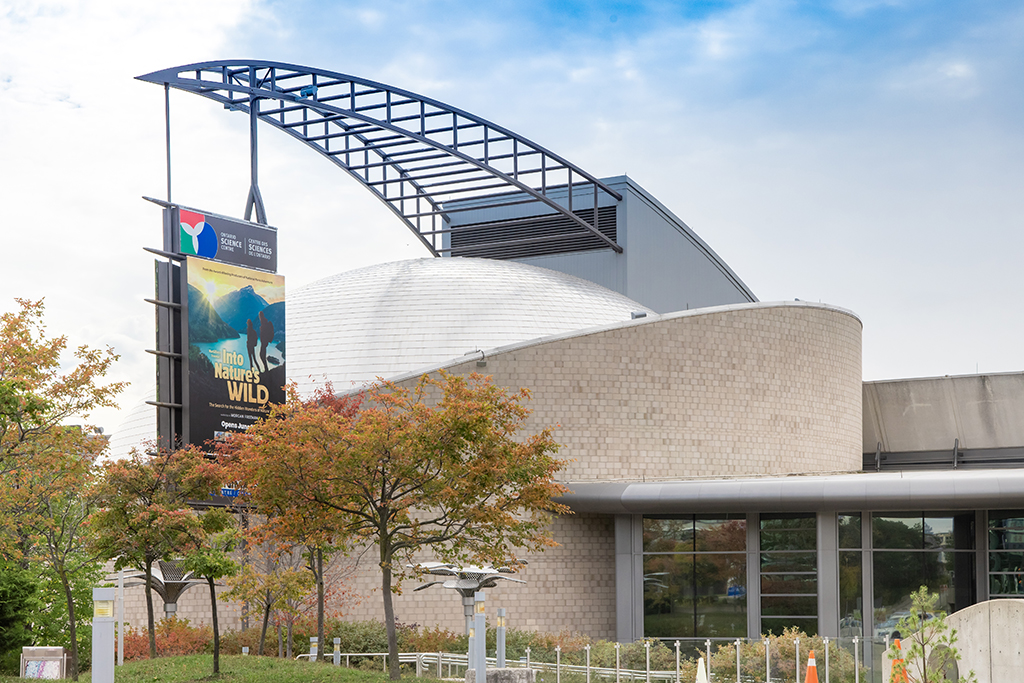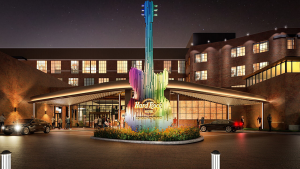TORONTO — As the sun shone on an unusually warm day at the end of October, Emma Meadley Dunphy took one final, emotional stroll through the Ontario Science Centre.
The centre’s volunteer co-ordinator wandered the cavernous spaces trying to soak it all in, before workers had to be out of the building by midday on Oct. 31.
“I kept running into lots of different people who were doing it themselves,” she said. “Everybody was clearly having a moment in each of the spaces.”
It had been a furious few months of packing up and sending countless truckloads of stuff to storage facilities in numerous locations.
A few things too difficult to move were still in the building. Questions hung in the air, too. Did it really need to be this way? Would they ever come back?
Ontario officials announced the abrupt and permanent closure of the science centre in late June, saying engineers found structural issues with the roof.
The province plans to move the science centre to a new location as part of a revamped Ontario Place. The move sparked outrage among workers, nearby residents and visitors and has become a political hot potato for Premier Doug Ford at Queen’s Park.
On her final day in the building, Meadley Dunphy visited a few places that had been meaningful to her.
She visited the camp room where she worked as a volunteer in high school some 20 years ago.
Then she stopped by the rainforest, or what remains of it.
The animals that lived there — turtles, snakes, fish and poisonous frogs — have been re-homed, while much of the vegetation was ripped out and transplanted at the Toronto Zoo.
Five large trees, too big to move, are still there and should survive, so long as the building’s automated watering system continues working and the heat remains on.
On stressful work days, Meadley Dunphy said she would often find herself visiting the rainforest. The dewy, earthy smell relaxed her.
Despite the lack of vegetation, the smell remains. But it’s not the same, she said.
“That magic is gone.”
Meadley Dunphy spent the past few months winding up the centre’s volunteer operations, helping with camps that still ran off-site.
Like most other workers, she also helped pack.
“It’s not my normal job, but it’s a very sad reminder about what’s happening and there’s no way to escape that,” she said, tearing up.
Before they had to clear out that day, science centre workers had an ice cream party for 28 cleaning staff who were laid off by Dexterra, the company that managed them.
It was their final day on the job. While the pay hadn’t been great at $16.50 per hour, the cleaners had union jobs with benefits and a full pension.
Ford pledged to help find them a job “within the system,” but that never happened, said Martin Fischer, the president of Local 549 of Ontario Public Service Employees Union, which represents about 500 science centre workers.
But they were buoyed by support from the public after news of the layoffs broke in September, he said.
“It is heartbreaking, but they have gotten to a good head space,” Fischer said.
He said he is still holding out hope that workers might someday return to the building.
He pointed to ongoing repair work as the source of that hope. There is scaffolding in the great hall and the auditorium that allows access to the roof, where engineers had identified panels in danger of collapsing.
The heating in Building B, which housed many exhibits, theatres and the great hall, has been fixed.
“We do appreciate that the building is being repaired, but, of course, everybody wonders, what for? What is it going to be?” Fischer said.
“So, I haven’t given up hope that we can return.”
The Canadian Press has reached out to the science centre with several questions about the state of affairs.
Infrastructure Ontario and Infrastructure Minister Kinga Surma’s office did not respond to requests for comment.
About 10 workers have taken a buyout, Fischer said, while many others are worried where they’ll end up.
The province is looking for an interim location for the science centre with its permanent new space set to open in 2028 at the earliest.
The production team, which makes exhibits for science centres around the world, does not have a new home yet. The shop’s machines and production materials are stored away in Huntsville, Ont., a three-hour drive north of Toronto, Fischer said.
“That work is on hold because we don’t have a location,” he said.
Other items are stored in facilities in Guelph, Ont., northern Toronto and at Sherway Gardens, a mall in western Toronto where a science centre pop-up location just opened. There is also a pop-up coming to Harbourfront Centre in downtown Toronto.
Oct. 31 was a difficult day for Fischer, who worked at a science centre in Switzerland, where he grew up, before moving to Ontario with his Canadian wife.
“The only place I ever applied for jobs in Canada was at the Ontario Science Centre,” he said.
Next year will mark his 25th at the centre.
“I think many of us are neurodivergent here. We think outside the box, like exploring the world on our own terms,” Fischer said. “And the science centre is this utopia where kids — and us workers — can be themselves.”
Ward Kennedy can clearly remember his first visit to the science centre in 1970, when he was six years old.
He grew up in nearby Flemingdon Park, so his family visited the centre often.
“I remember the 25-cent submarine sandwiches and the old cafeteria, which was very, very tiny, and I remember the parabolic dishes at either end of one of the buildings where we could talk and our voice would travel across to the other side,” Kennedy said.
“It’s a special place.”
He served as a volunteer ham radio operator and helped run the science centre’s amateur radio station.
Last year, the science centre had fixed the antenna system on the roof and installed a new rotor within it, so they could move it around properly.
As things wound down this October, Kennedy helped dismantle the radio equipment and send it off to storage.
“There are no plans in the future to install a new amateur radio station at a new Ontario Science Centre,” he said.
He listed off more of the items that are gone now, sent away to places across the province.
The Toronto Bee Collective came and took the dozen or so bee hives that are now set up at Black Creek Pioneer Village, he said.
Gone too are the iconic Canadarm and the fin whale skeleton, which he said were especially difficult to take down.
“The last several weeks has been very frustrating and emotionally draining,” he said. “I’m depressed about it.”
But Kennedy said staff left a few big-ticket items behind, and he isn’t sure why. There’s a ship’s propeller, and the cross-section of a massive Sitka spruce tree trunk.
“There’s a whole crapload of stuff that’s still left,” he said.
Back when the science centre was full and Kennedy would come in for a 6 a.m. shift, he’d take some time for himself to walk around the building alone.
He choked up as he recalled taking his daughter, years ago, to KidSpark — an interactive environment at the centre for younger children. This past spring, he brought her again, this time with his granddaughter in tow.
“It just meant so much,” he said. “I wish I could have taken them more often because it’s a one-of-a-kind building.”
©2024 The Canadian Press











Recent Comments
comments for this post are closed